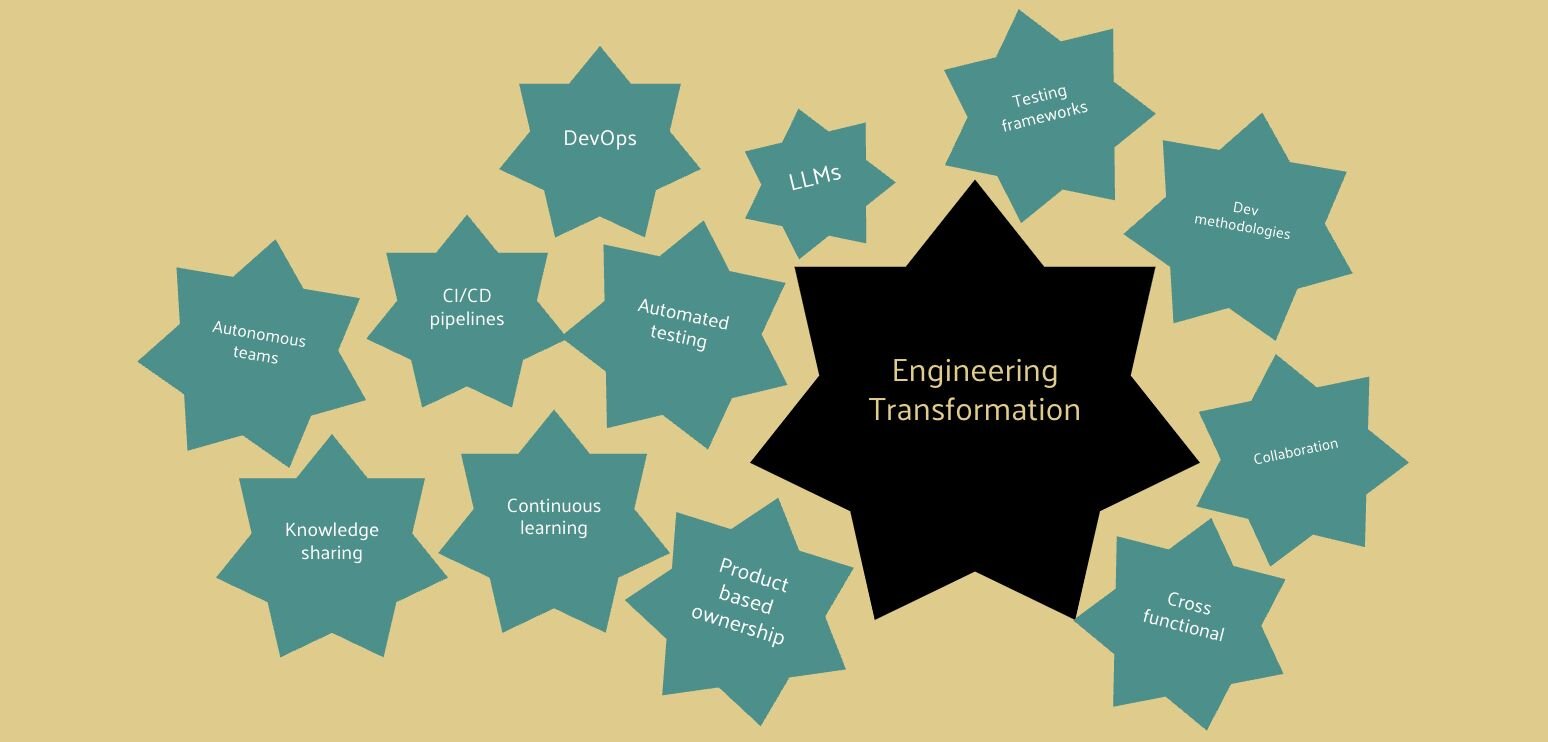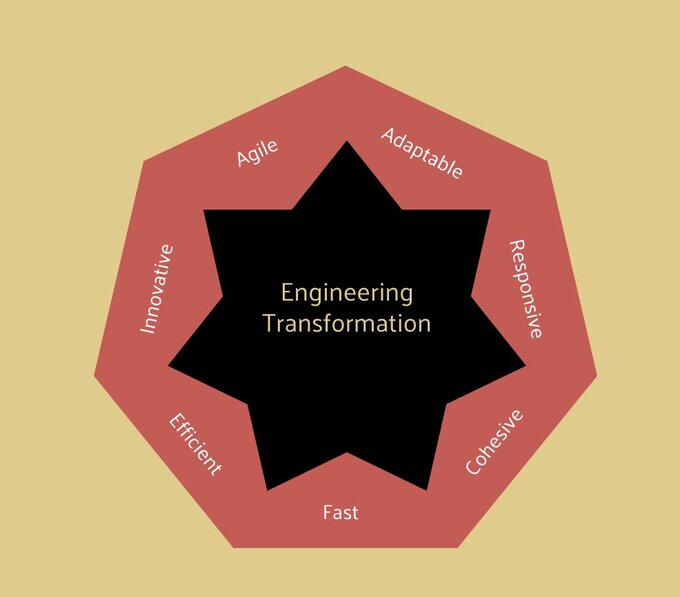
You only need to look at Deepseek’s recent disruption in AI to know how rapidly evolving the business landscape is. Digital transformation has moved beyond buzzword status to become a fundamental driver of organizational success and as technology continues to reshape industries at an unprecedented pace, engineering transformation has emerged as a critical component in helping businesses adapt and thrive. Technology organizations are no longer just service providers; they have become strategic enablers of business transformation, required to anticipate and respond to evolving business demands with increasing efficiency and effectiveness. This means staying at the forefront of technological innovation, fostering sustainable development practices, delivering tangible value, and building resilience for future challenges of business.
Fundamentally, engineering transformation broadly encompasses four key pillars that form the foundation of successful digital evolution:
Modern Technology
Modern technology stack adoption is crucial for engineering transformation. This includes, amongst other things, embracing cloud-native architectures, containerization, and microservices. Organizations must implement robust DevOps practices, automated testing frameworks, and continuous integration/continuous deployment (CI/CD) pipelines. Incorporating and embedding LLMs into processes to improve efficiency is a must. The focus should be on scalable, maintainable, and secure solutions that can adapt to changing business needs.
Ways of Working
Agile methodologies and lean principles are at the heart of modern engineering practices. This means adopting iterative development approaches, implementing feedback loops, and fostering collaboration between development and operations teams. Cross-functional teams work together in short sprints, delivering incremental value while maintaining the flexibility to pivot based on business needs and market demands.
Organization
Organizational structure plays a vital role in engineering transformation. Traditional siloed departments are giving way to product-oriented teams that align with business capabilities. This restructuring often involves creating autonomous teams with end-to-end responsibility for their products or services. The focus shifts from project-based delivery to product-based ownership, ensuring long-term sustainability and continuous improvement.
Culture
Perhaps the most critical element of engineering transformation, and likely the most challenging to accomplish, is culture. Organizations must foster an environment that encourages innovation, experimentation, and continuous learning. This includes embracing failure as a learning opportunity, promoting knowledge sharing, and supporting professional development. A strong engineering culture values technical excellence while maintaining a clear focus on business outcomes.

The Future of Engineering Transformation
The success of engineering transformation relies heavily on leadership commitment and clear communication of the vision throughout the organization. We believe it requires investment in both technology and people, along with patience as new practices and mindsets take root. It is worth remembering that there is always going to be a natural tension between the need for rapid transformation and maintaining stability in existing systems and services.
Looking ahead, engineering transformation will continue to evolve as new technologies emerge and business needs change. The accelerated pace of artificial intelligence will challenge businesses to be prepared for this, more than ever before. Organizations that successfully navigate this status quo will be better positioned to respond to market opportunities, deliver value to customers, and maintain that critical competitive advantage.
The key to successful engineering transformation however, lies not just in implementing these elements individually, but in understanding how they work together to create a cohesive, efficient, and innovative engineering organization. It's about building a foundation that can support both current needs and future growth while maintaining the agility to adapt to whatever challenges lie ahead.
In our next blog on engineering transformation, we will explore some of the key metrics to monitor and measure your transformation.
Latest Tech Updates in Your Industry
Designed to keep employees, clients, and our valued external audience up to date with the latest developments in software news and innovation. It is your go-to source for all things cutting-edge in the tech industry.
Related Updates




















Contact Us

New York, NY 10003



New York, NY 10003, U.S.A.
London, EC4A 3TW,






